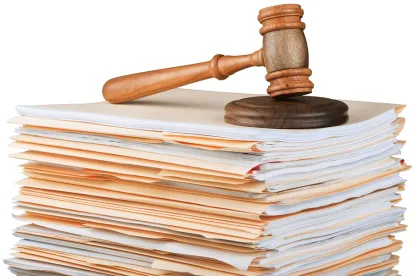The New Jersey Appellate Division has sustained the trial court’s decision to pick and choose portions of the plaintiff’s expert’s testimony in calculating the damages flowing from the breach of a medical billing and collections contract. The decision in Imaging Subspecialists of North Jersey, LLC v. AdvantEdge Healthcare Solutions, LLC, A-5134-14T4 (Mar. 17, 2017) highlights the discretion trial courts have in evaluating expert testimony and in crafting damage awards based only upon those parts of the expert’s opinions that it finds credible and supported.
The plaintiffs in Imaging Subspecialists were two affiliated radiology practices that entered into identical agreements with AdvantEdge to perform billing and collections services. The agreements provided that AdvantEdge would “apply its best efforts to obtain reimbursement for [plaintiffs’] charges for all clinical procedures and medical services . . . through billing of patients and third party payers and the management of [plaintiffs’] accounts receivable.” After plaintiffs became dissatisfied with the services provided, they filed suit alleging breach of contract and related claims.
Plaintiffs’ expert witness was Matthew Brennan, president of Precision Healthcare Management, LLC, a medical practice management service company. Brennan was a certified professional coder and a radiology certified coder who had conducted more than 70 billing audits and more than 100 coding audits. Brennan’s opinions addressed both liability and damages. He opined that plaintiffs had “an unusually high rate [7.85%] of insurance claims with zero payments recorded.” He examined a sample of 50 of those unpaid claims and concluded that 64 percent were due to errors by AdvantEdge. He then looked at data from five other practice groups that he considered comparable and found the average unpaid claims rate was only 3.33 percent. Using the difference between the average rate and the plaintiffs’ rate, Brennan then calculated the loss of revenue sustained by plaintiffs as $449,946. Brennan also looked at damages from “underpaid claims” (where payers provide too little for a given procedure). Auditing two sample months during the contract and extrapolating that data, Brennan determined an additional damage amount of $106,504.
The defendant submitted its own expert report from Robert Burleigh, a health care billing and management consultant, to dispute Brennan’s opinions. Before trial, each side moved to exclude the other’s expert. The court denied both motions and evaluated the experts’ testimony at the bench trial. The court found both experts to be credible and accepted pieces from each expert’s testimony, noting that there was “no one standard methodology for calculating lost revenue in a medical billing case.” The court credited Burleigh’s testimony that only one of the comparable medial practices was, in fact, comparable to plaintiffs’ practices, and thus he used the percentage of unpaid claims in that practice as a benchmark for what was reasonable and customary. This resulted in a smaller differential with the plaintiffs’ rate and thus, a smaller revenue loss of $351,717. The court entirely discounted Brennan’s “underpaid claims” calculation, finding that he had not explained why the claims were underpaid and whose error (if any) caused the underpayment. In contrast to his “unpaid claims” methodology, he had not done a comparative analysis to show that plaintiffs’ rate of underpaid claims was unusual. The court then awarded damages in the amount of $351,717.
On appeal the defendant raised two arguments: first, that the trial court should have excluded Brennan’s testimony and, second, that the court erred in picking out only parts of Brennan’s opinions, thus “creating [his] own damages calculation.” On the first issue, the Appellate Division noted that the trial court had a large measure of discretion over the admission or exclusion of expert testimony. The appeals court cautioned that, even when a limited evidentiary issue was presented, in limine rulings (which limit or prevent certain evidence from being presented by the other side) were disfavored “because the trial provides a superior context for the consideration of such issues” and because excluding an expert’s testimony often leaves a party with no means to prove its case. Particularly in a non-jury trial, the trial court is able to hear the testimony, decide its admissibility and evaluate what weight to give it.
Addressing the second argument AdvantEdge raised on the appeal, the Appellate Division supported the trial court’s picking and choosing aspects of the experts’ opinions in rendering a damage award, stating that the court may “reach whatever conclusion may logically flow from the aspects of such testimony it accepts.” The appeals court took note of the trial court’s careful consideration of the testimony, including its rejection of some of Brennan’s opinions and calculations as unsupported. Accordingly, the court found the trial judge properly limited the damages to those that flowed from those opinions it credited.




 />i
/>i
